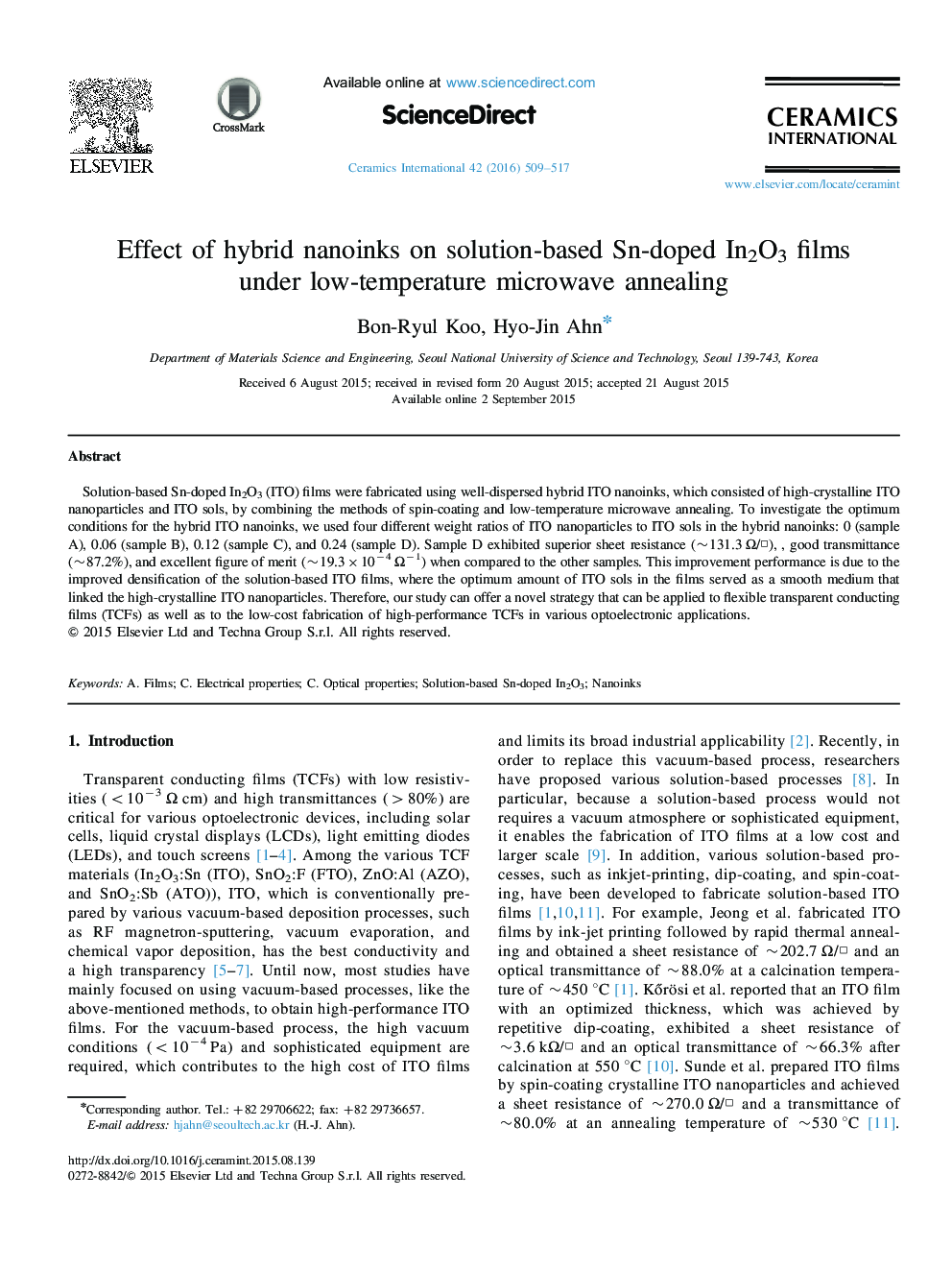| Article ID | Journal | Published Year | Pages | File Type |
|---|---|---|---|---|
| 1459457 | Ceramics International | 2016 | 9 Pages |
Solution-based Sn-doped In2O3 (ITO) films were fabricated using well-dispersed hybrid ITO nanoinks, which consisted of high-crystalline ITO nanoparticles and ITO sols, by combining the methods of spin-coating and low-temperature microwave annealing. To investigate the optimum conditions for the hybrid ITO nanoinks, we used four different weight ratios of ITO nanoparticles to ITO sols in the hybrid nanoinks: 0 (sample A), 0.06 (sample B), 0.12 (sample C), and 0.24 (sample D). Sample D exhibited superior sheet resistance (~131.3 Ω/□), , good transmittance (~87.2%), and excellent figure of merit (~19.3×10−4 Ω−1) when compared to the other samples. This improvement performance is due to the improved densification of the solution-based ITO films, where the optimum amount of ITO sols in the films served as a smooth medium that linked the high-crystalline ITO nanoparticles. Therefore, our study can offer a novel strategy that can be applied to flexible transparent conducting films (TCFs) as well as to the low-cost fabrication of high-performance TCFs in various optoelectronic applications.
